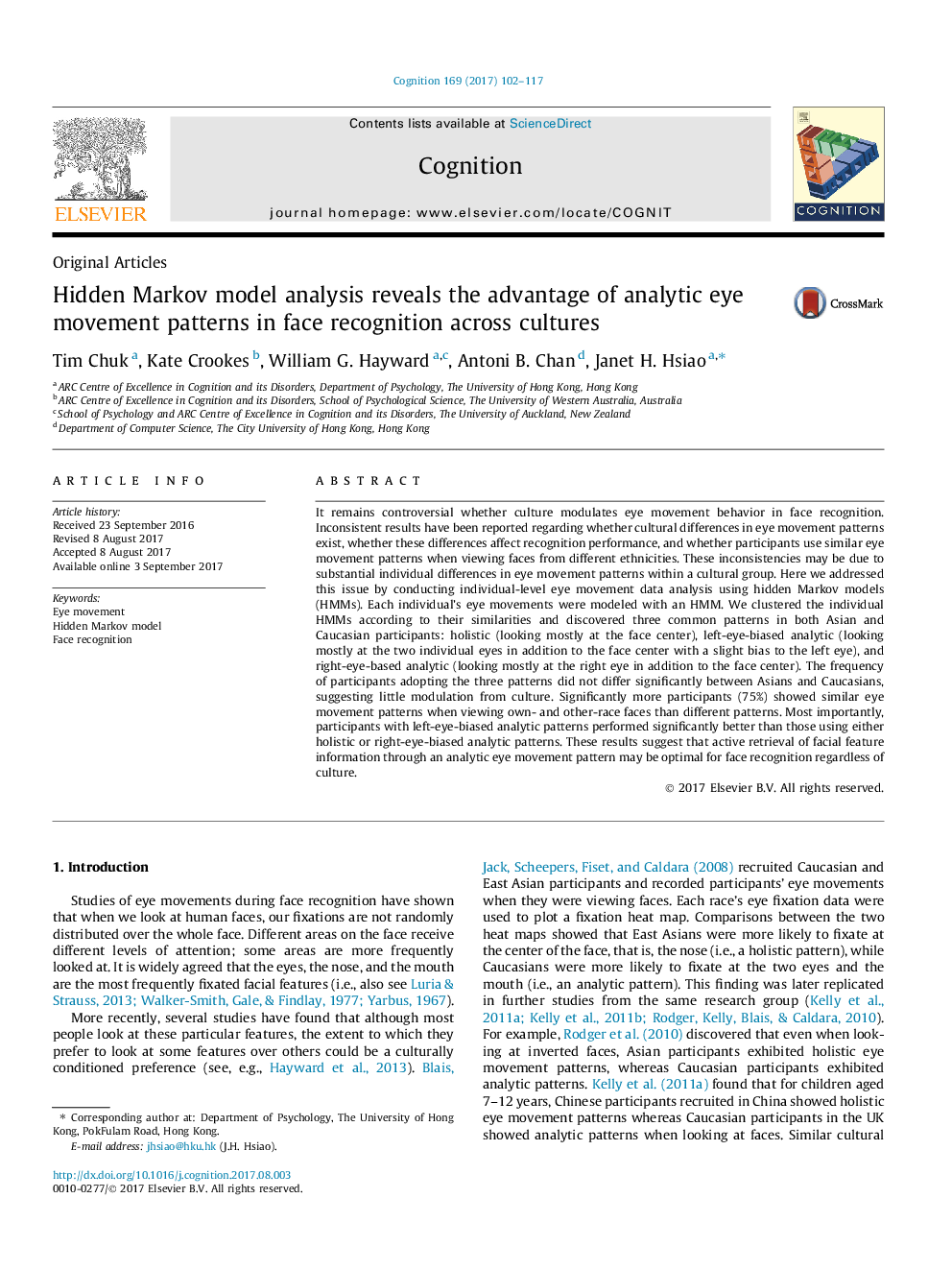| Article ID | Journal | Published Year | Pages | File Type |
|---|---|---|---|---|
| 5041464 | Cognition | 2017 | 16 Pages |
It remains controversial whether culture modulates eye movement behavior in face recognition. Inconsistent results have been reported regarding whether cultural differences in eye movement patterns exist, whether these differences affect recognition performance, and whether participants use similar eye movement patterns when viewing faces from different ethnicities. These inconsistencies may be due to substantial individual differences in eye movement patterns within a cultural group. Here we addressed this issue by conducting individual-level eye movement data analysis using hidden Markov models (HMMs). Each individual's eye movements were modeled with an HMM. We clustered the individual HMMs according to their similarities and discovered three common patterns in both Asian and Caucasian participants: holistic (looking mostly at the face center), left-eye-biased analytic (looking mostly at the two individual eyes in addition to the face center with a slight bias to the left eye), and right-eye-based analytic (looking mostly at the right eye in addition to the face center). The frequency of participants adopting the three patterns did not differ significantly between Asians and Caucasians, suggesting little modulation from culture. Significantly more participants (75%) showed similar eye movement patterns when viewing own- and other-race faces than different patterns. Most importantly, participants with left-eye-biased analytic patterns performed significantly better than those using either holistic or right-eye-biased analytic patterns. These results suggest that active retrieval of facial feature information through an analytic eye movement pattern may be optimal for face recognition regardless of culture.
